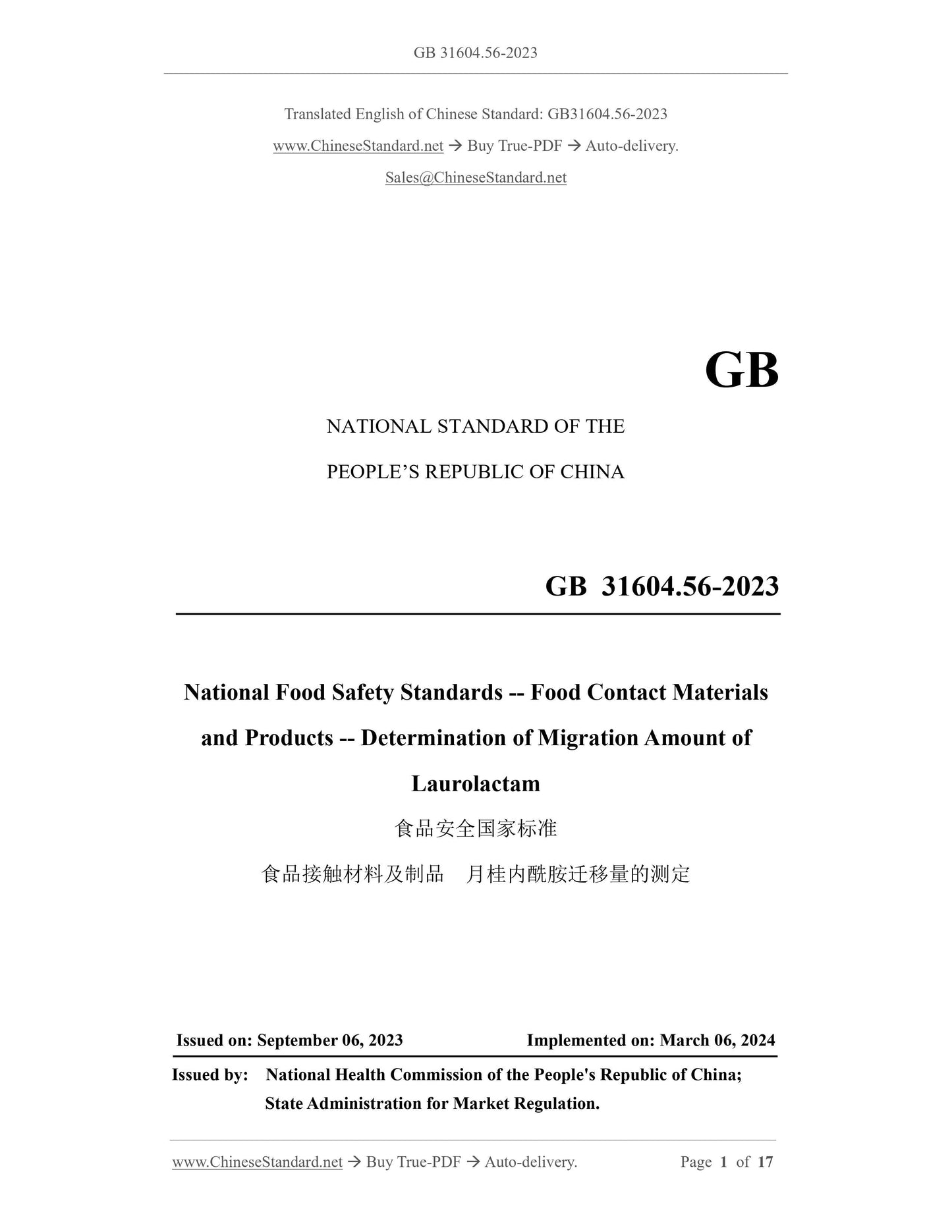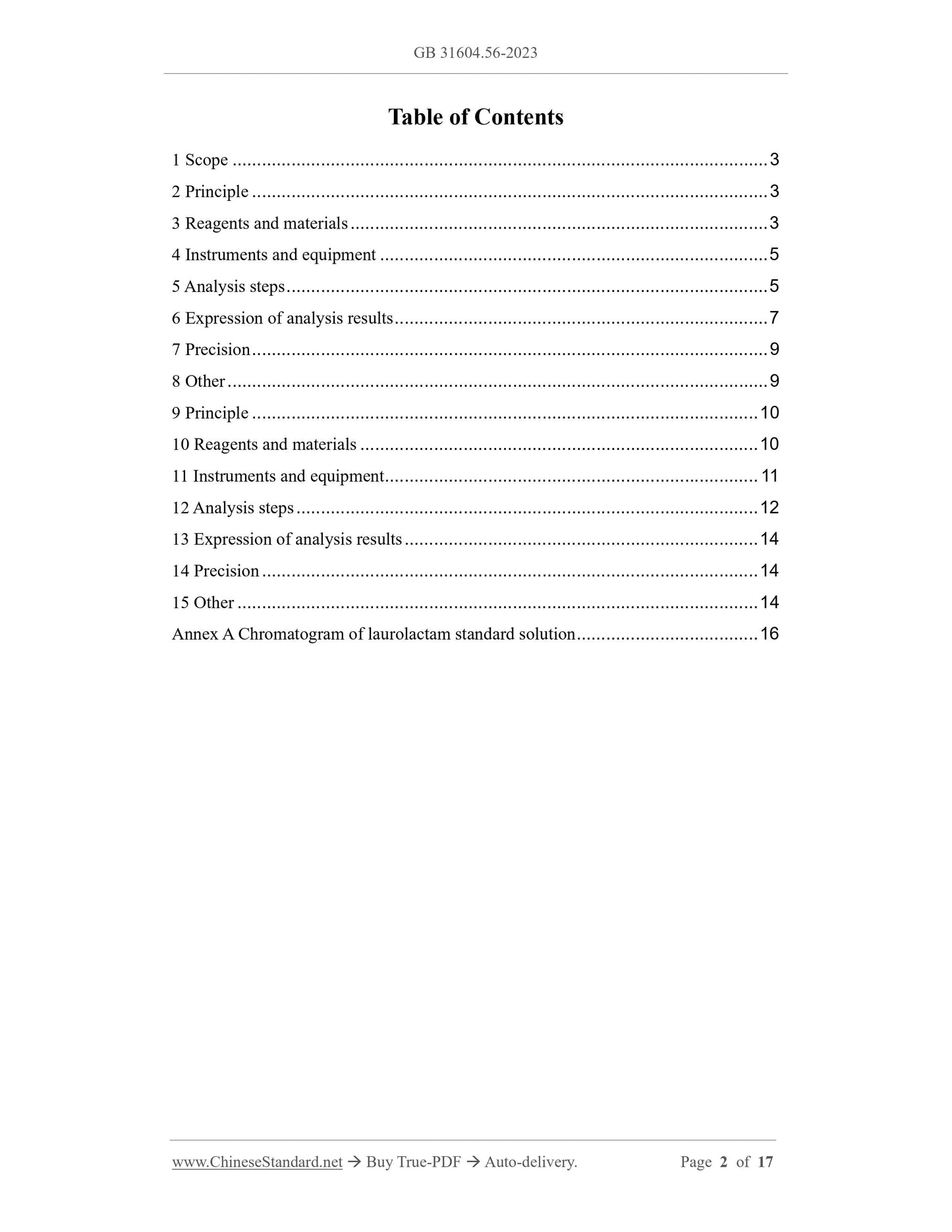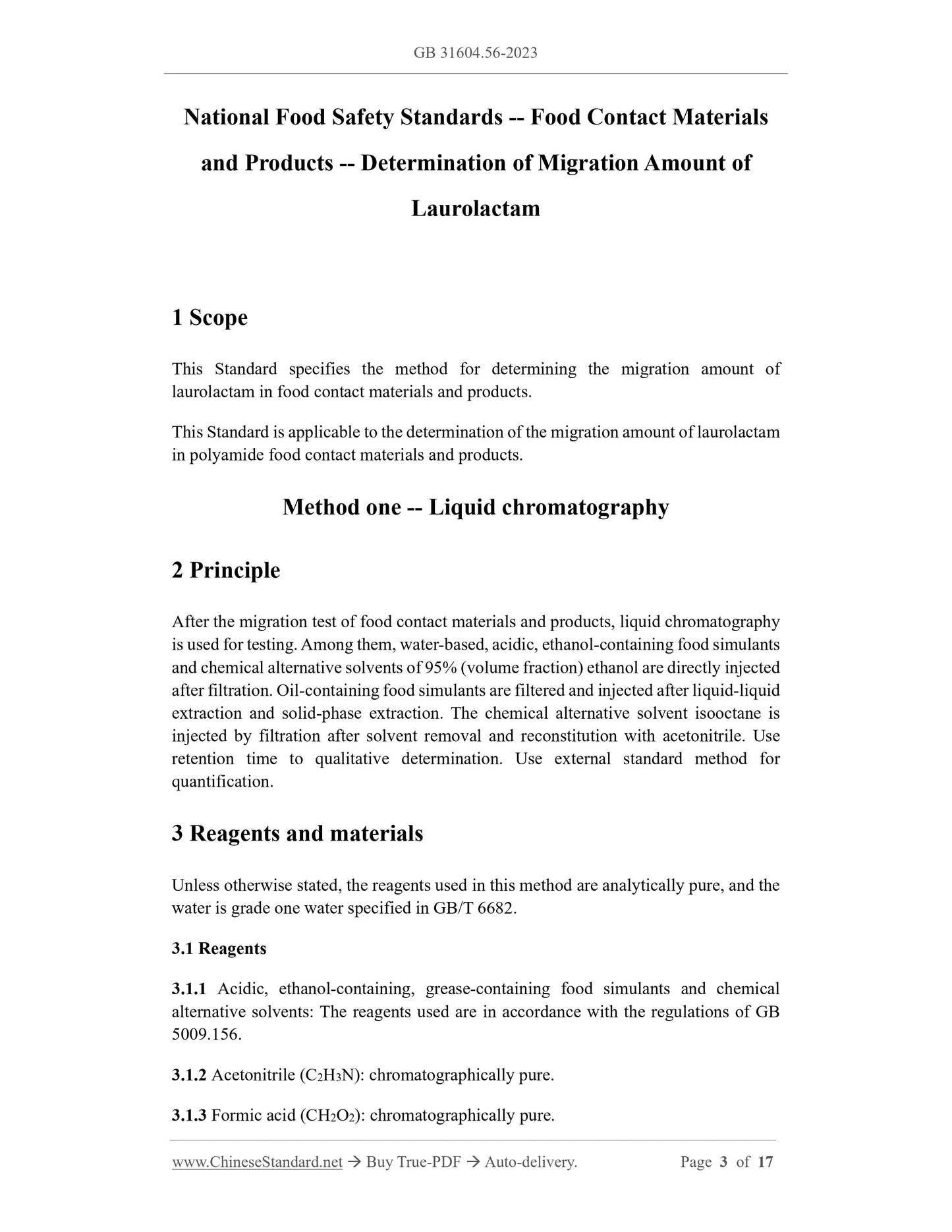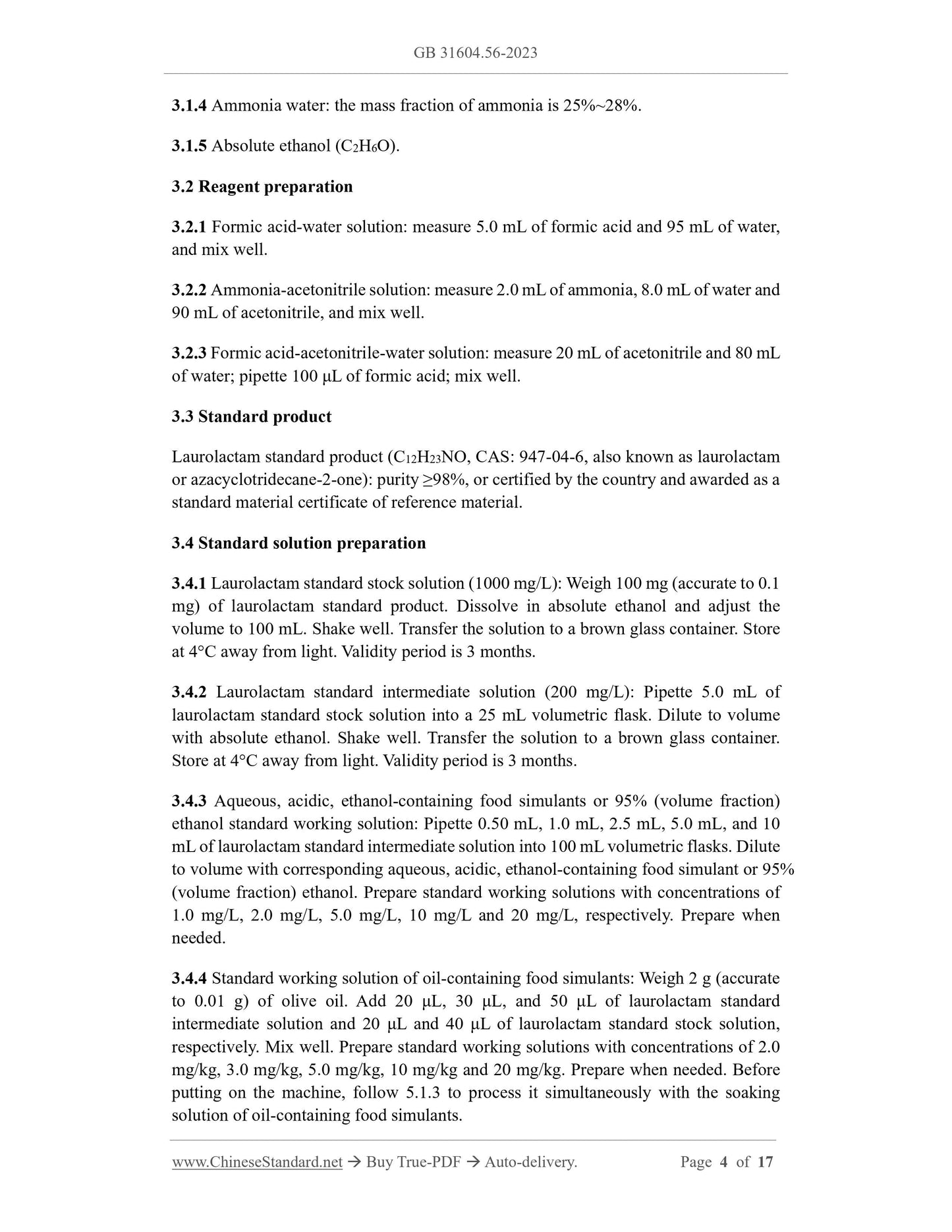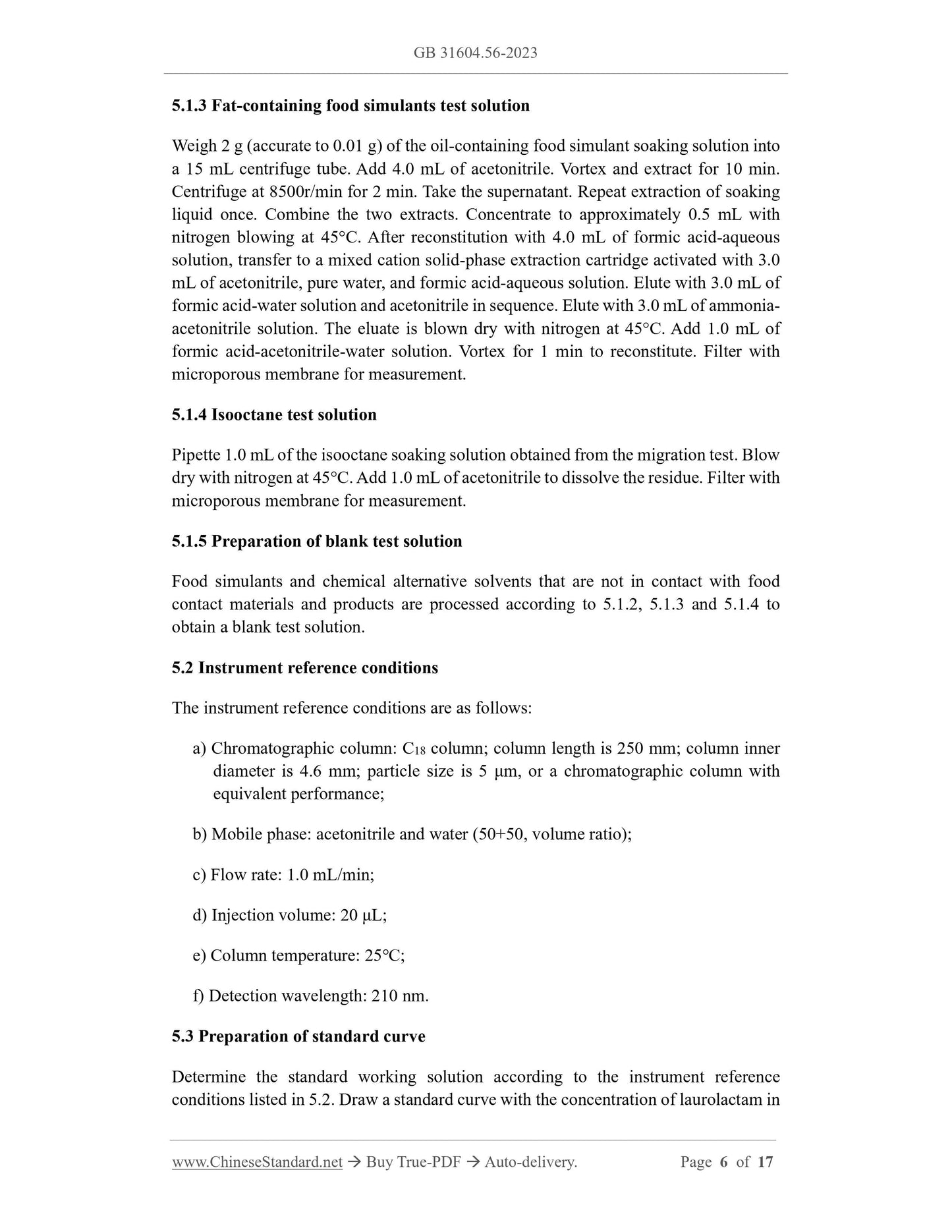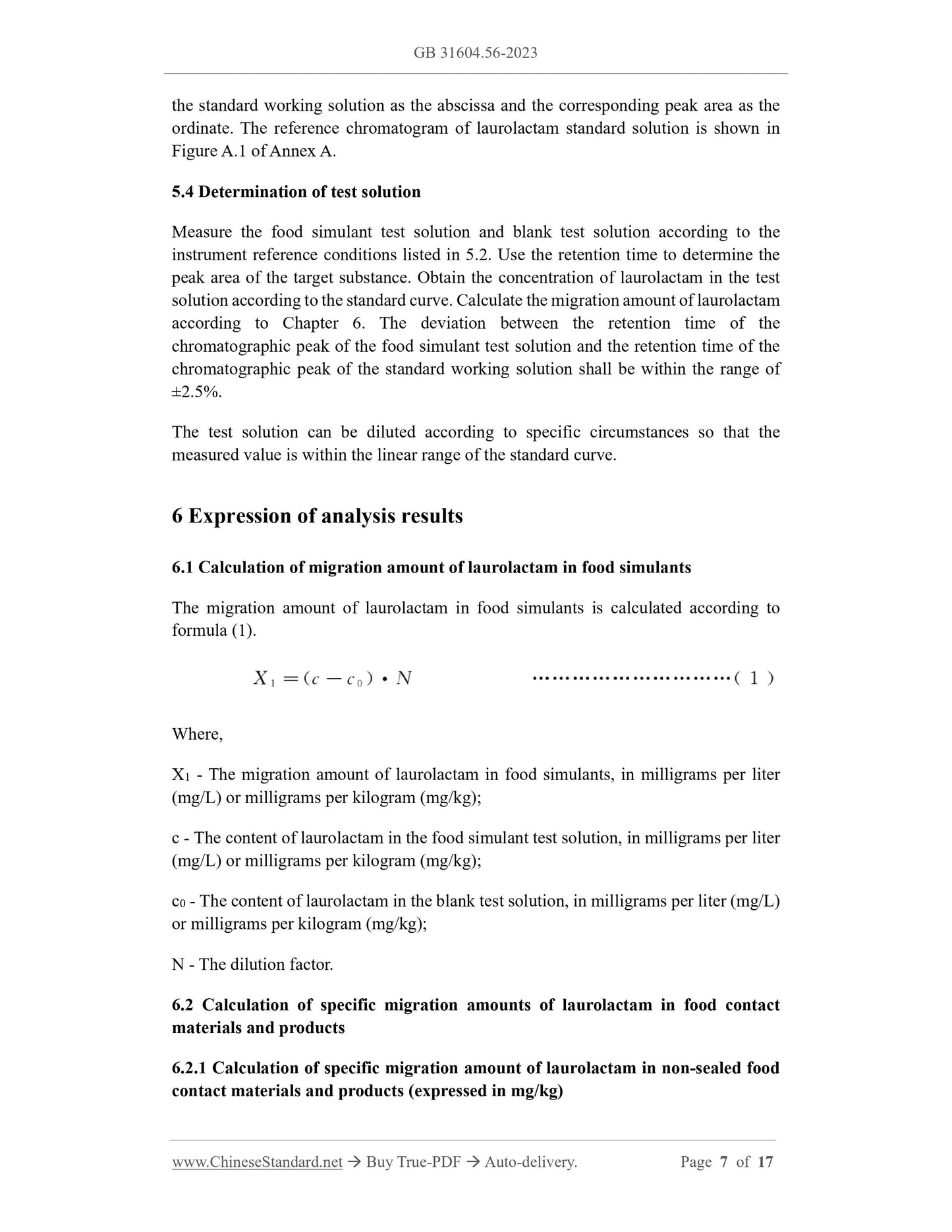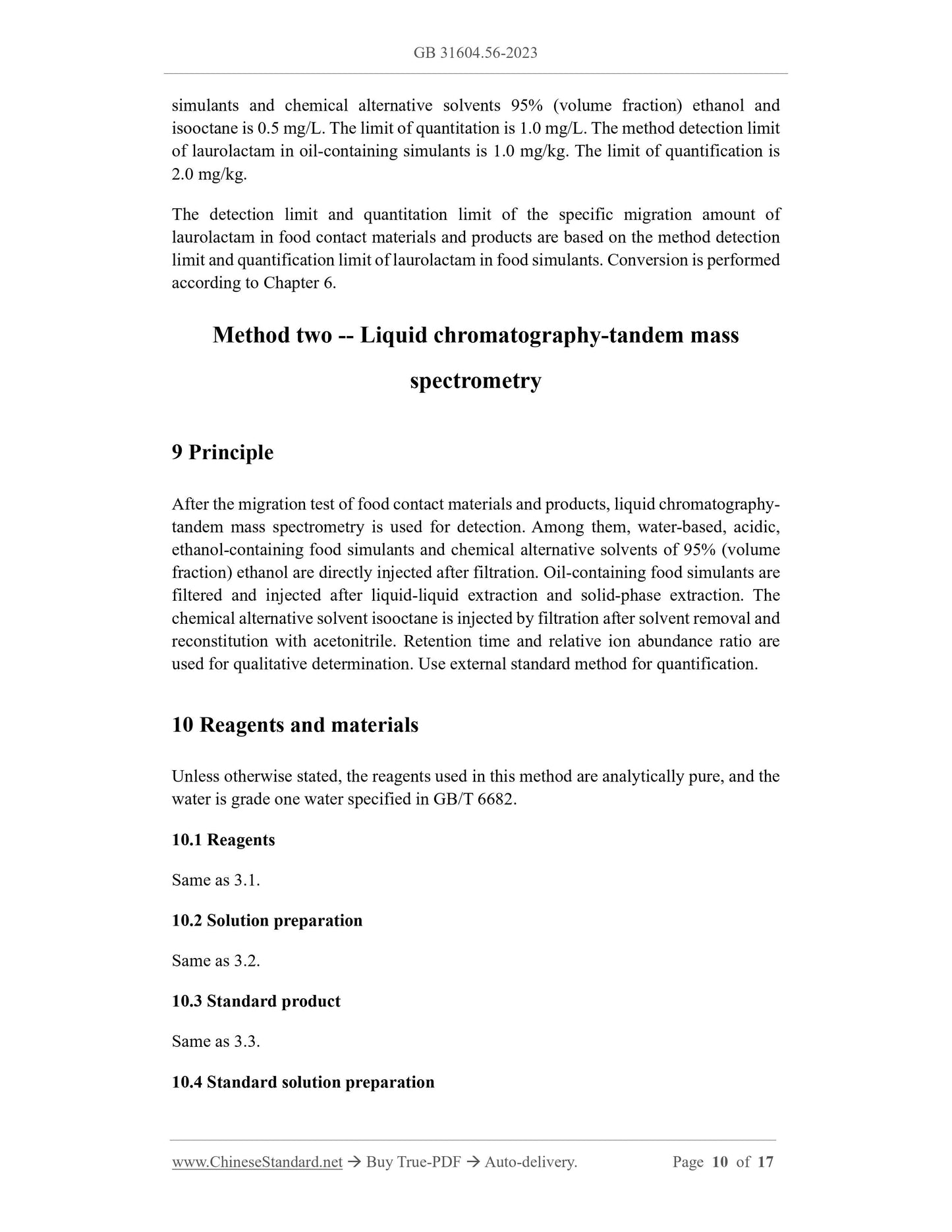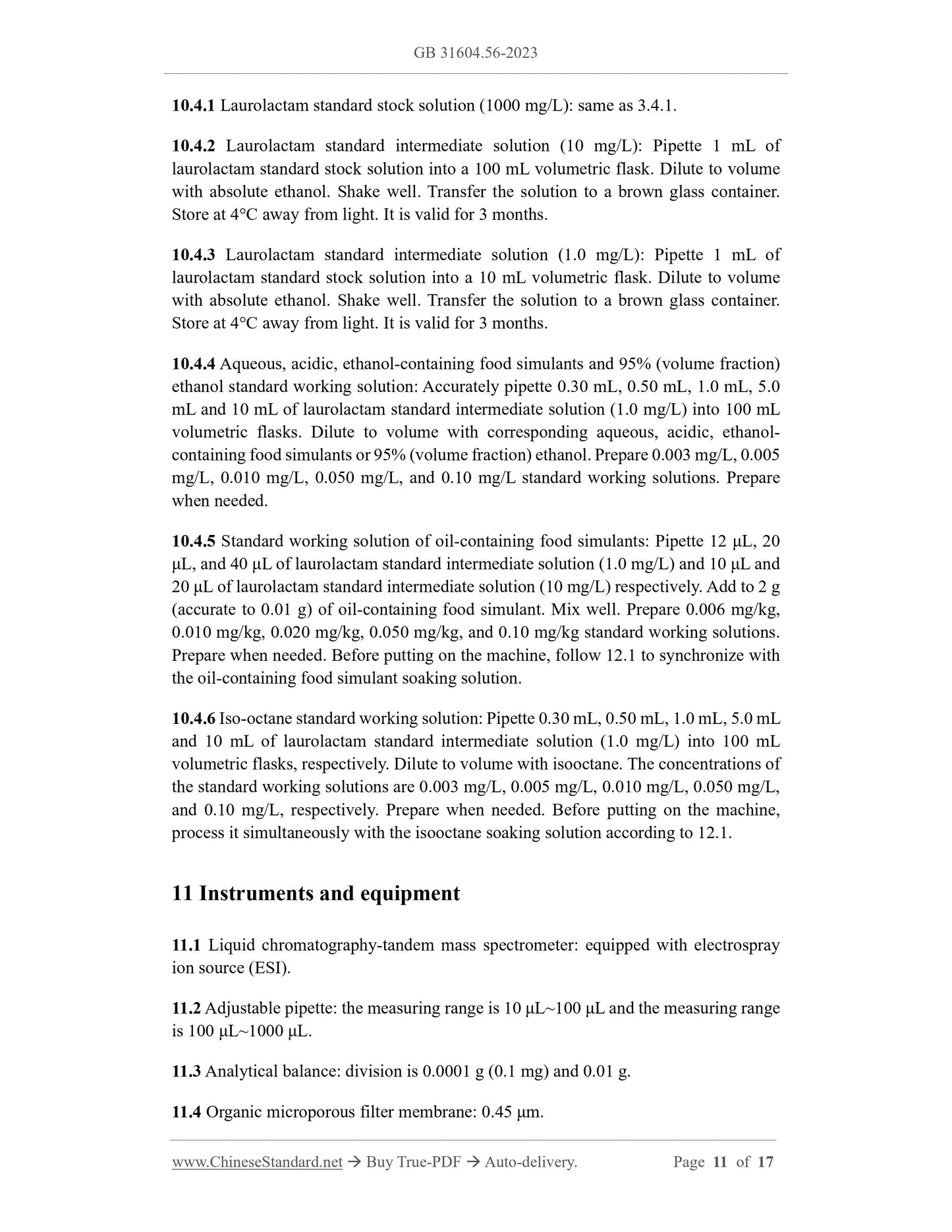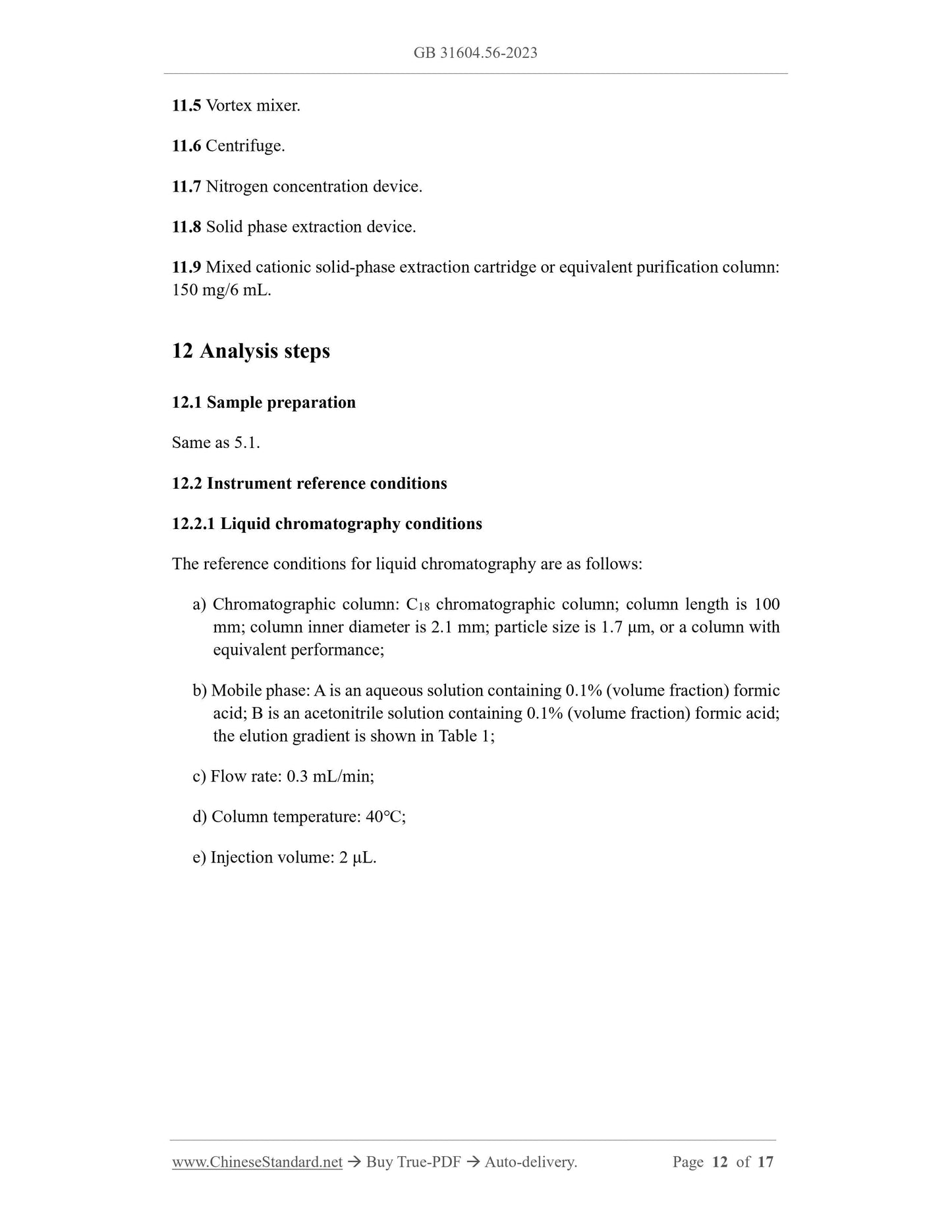1
/
of
9
www.ChineseStandard.us -- Field Test Asia Pte. Ltd.
GB 31604.56-2023 English PDF
GB 31604.56-2023 English PDF
Regular price
$215.00
Regular price
Sale price
$215.00
Unit price
/
per
Shipping calculated at checkout.
Couldn't load pickup availability
GB 31604.56-2023: National food safety standard - Food contact materials and products - Determination of laurolactam migration
Delivery: 9 seconds. Download (and Email) true-PDF + Invoice.Get Quotation: Click GB 31604.56-2023 (Self-service in 1-minute)
Newer / historical versions: GB 31604.56-2023
Preview True-PDF
Scope
This Standard specifies the method for determining the migration amount oflaurolactam in food contact materials and products.
This Standard is applicable to the determination of the migration amount of laurolactam
in polyamide food contact materials and products.
Method one -- Liquid chromatography
Basic Data
| Standard ID | GB 31604.56-2023 (GB31604.56-2023) |
| Description (Translated English) | National food safety standard - Food contact materials and products - Determination of fluorescent substances in paper, paperboard and paper products |
| Sector / Industry | National Standard |
| Classification of Chinese Standard | X09 |
| Word Count Estimation | 6,693 |
| Date of Issue | 2023-09-06 |
| Date of Implementation | 2024-03-06 |
| Issuing agency(ies) | National Health Commission of the People's Republic of China, State Administration for Market Regulation |
| Summary | This standard specifies the method for the determination of fluorescent substances in food contact paper, cardboard and paper products. This standard is applicable to the determination of fluorescent substances in food contact paper, cardboard and paper products. |
Share
